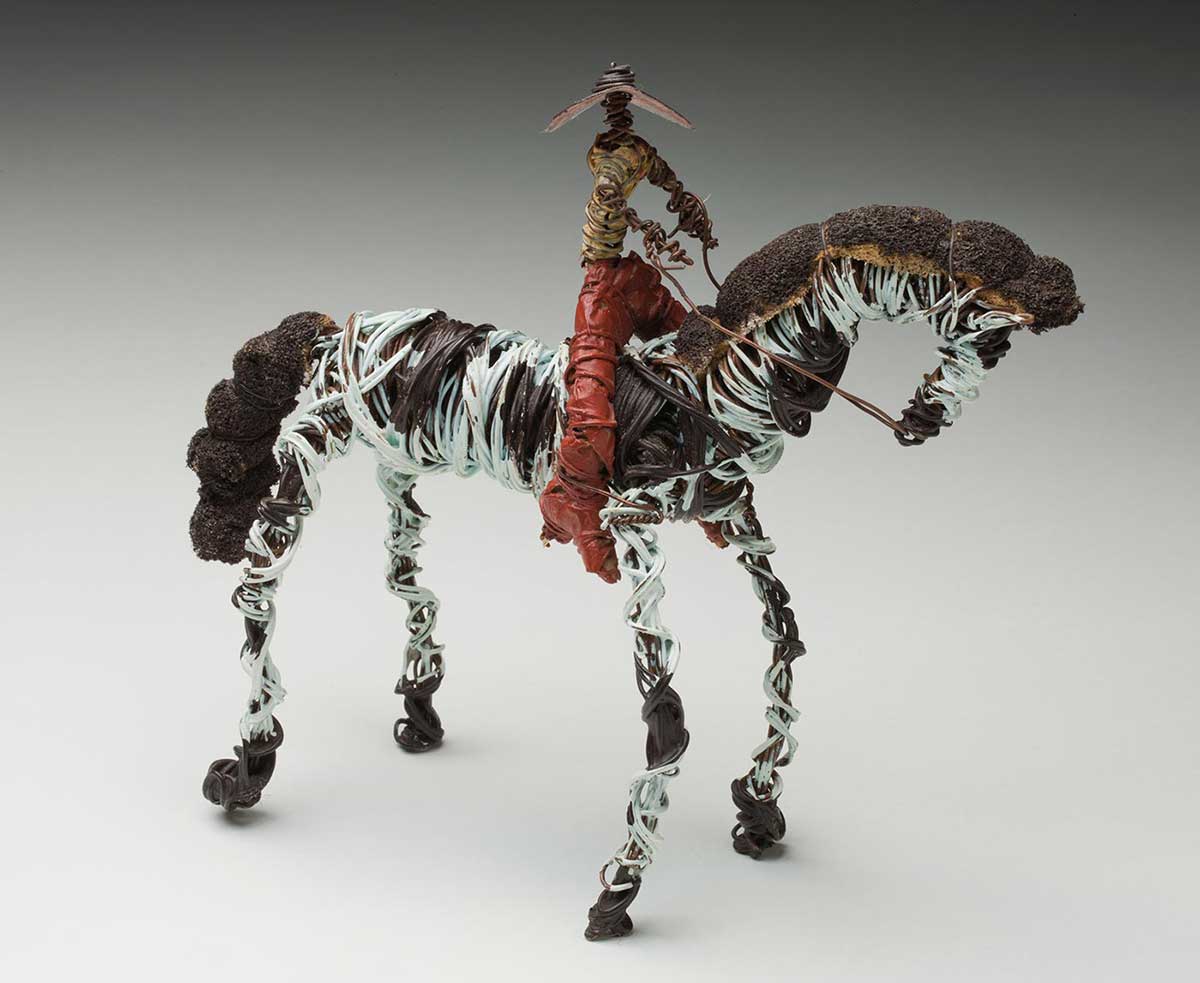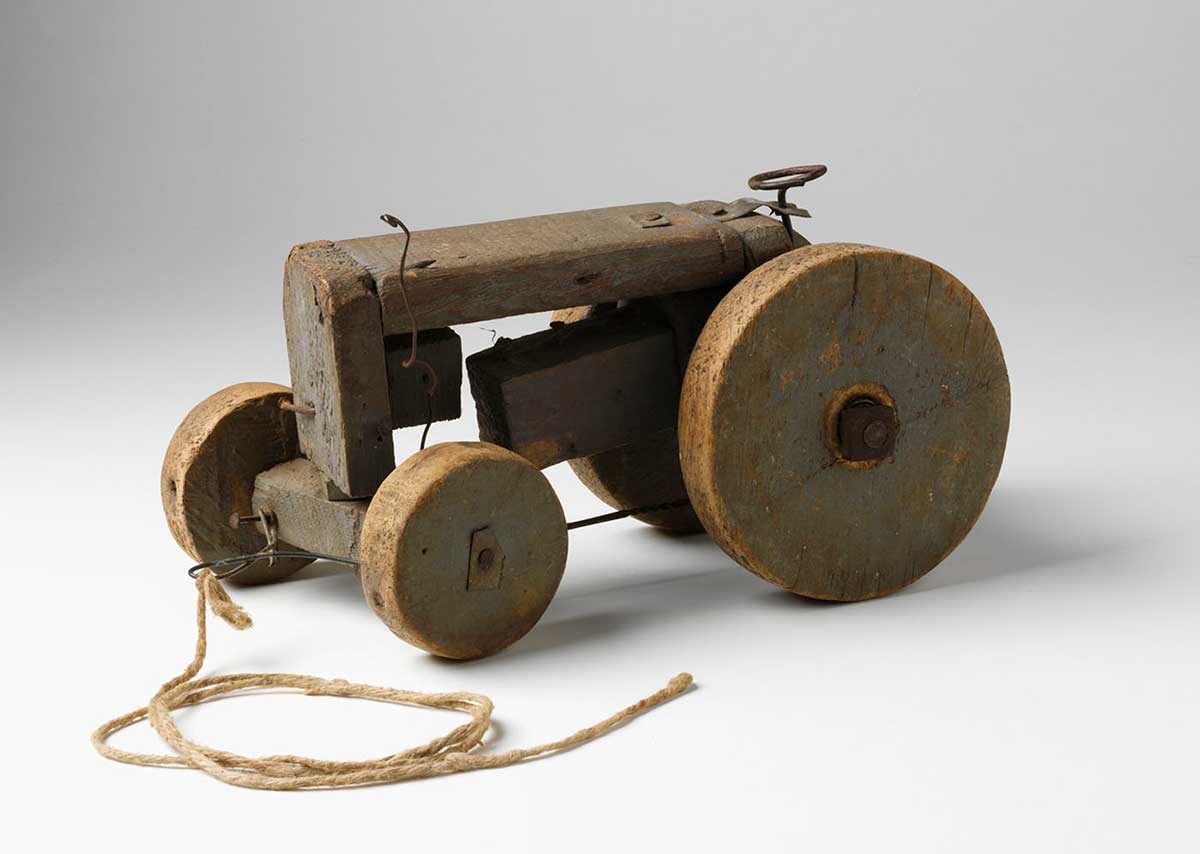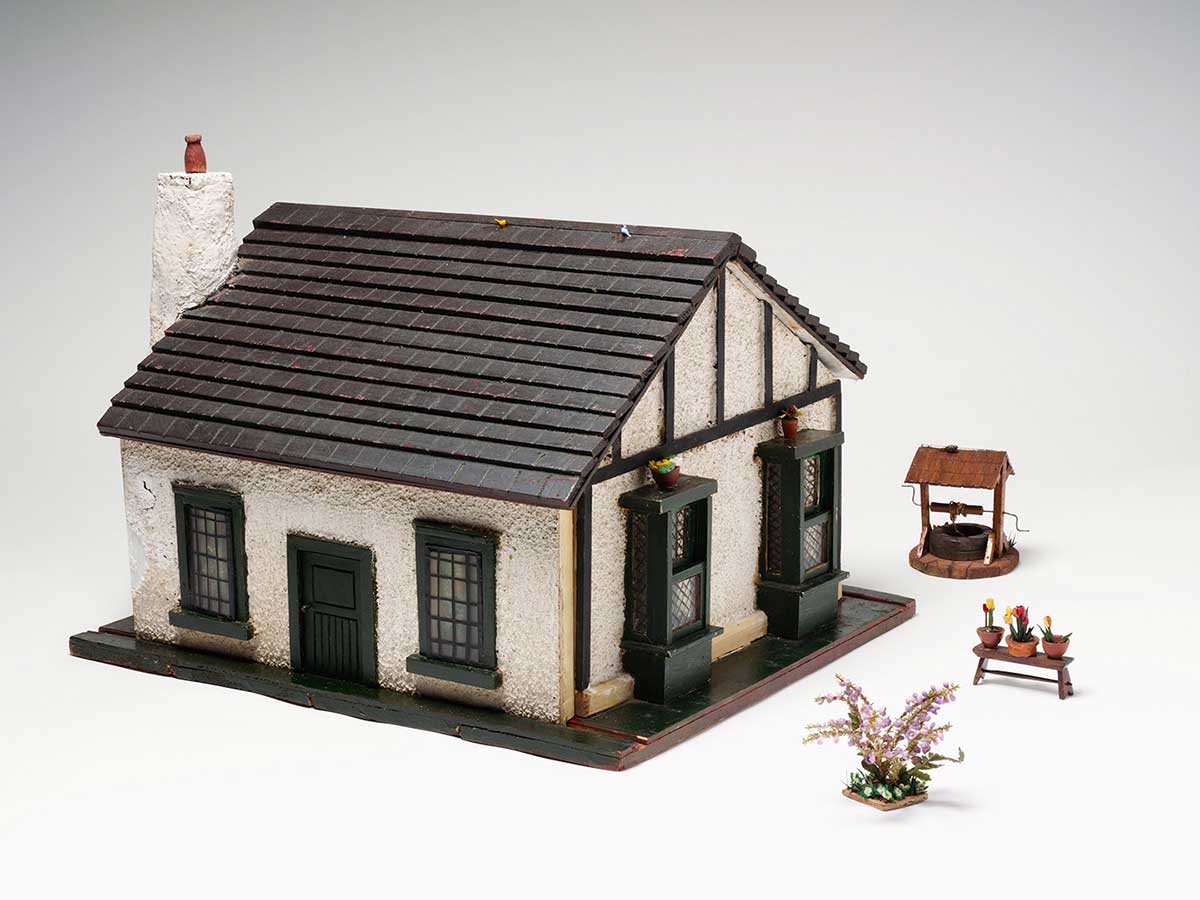Many of us have fond memories of waking up early on Christmas morning and running to a cheerfully decorated tree to unwrap our presents. There was no greater feeling than uncovering a toy you had been coveting all year. So as Christmas approaches and the anticipation grows, we’re looking at some of the children’s toys in the Museum’s collection.
Yuendumu bush toys

One of the Museum’s most engaging toy collections is an assortment of bush toys made by Indigenous children between 1997 to 1999, inspired by working life on outback cattle stations.
They were based on toys previously made by Eastern Arrernte men for many decades, and reflect an idealised version of the pastoral industry.
In lovingly creating these toys, Arrernte men found an outlet for their creativity and, arguably, a unique form of art that expressed ideas about identity and the world in which they lived.
Not all bush toys were as polished and well looked after as this collection. They were often rusty and caked in dirt. Thankfully, these bush toys have been well-preserved so we can admire their beauty and ingenuity for years to come.
Toy tractor
This toy tractor – made from banana boxes, scrap metal and a piece of string – shows the childhood ingenuity of Brian Burns, a 10-year-old boy from New South Wales.
Brian made this tractor in miniature after cajoling his father, Mick, for a Ford Ferguson 9N tractor. Mick suggested that if Brian wanted the tractor so badly, he should make one himself.
Australia was a nation at war when Brian was making his tractor in 1943, which meant that commercial toy-making was deemed non-essential. Brian used timber salvaged from banana boxes and made a steering mechanism from bits of steel, wire and string that he found in the shed.
Brian highly valued the tractor and it accompanied him from house to house for most of his adult life. Little of its original grey paint remains, but the spirit of childhood ingenuity is still evident.
Hetherington doll’s house
Eva Howie made this doll’s house for her oldest daughter, Barbara Hetherington, in the 1930s. It was modelled on an illustration from one of Barbara’s favourite childhood books, Millicent Mouse and her Funny Wee House.
The roof of the house can be lifted up to reveal an attic, and the walls slide to one side to reveal two ground-level rooms. The internal furnishings are a mixture of purchased and handmade items. There are beds, quilts, crocheted floor mats and handwritten newspapers. Many of these tiny items were handcrafted from bread dough.
Barbara was no longer a child when she received the gift and subsequent generations were not allowed to play with the treasure made by their great-grandmother. The exquisite doll house was admired and kept in mint condition for nearly 100 years.
We’ll keep bringing objects, collections, exhibitions and programs from the vault as part of the Museum from Home experience. Stay tuned!
In our collection
In our collection
You may also like


